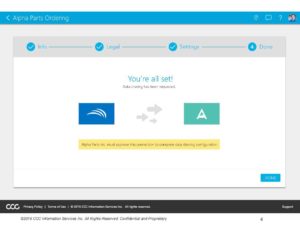
Ahead of CIC BMS discussion, CCC addresses ‘misconceptions’ about Secure Share
By onBusiness Practices | Education | Repair Operations | Technology
With just a few months to go before it begins to offer the new BMS collision industry digital standard to users, CCC sought to dispel what an executive called misconceptions about the company’s plans for the Secure Share initiative.
CCC announced in September 2016 that it would in April 2017 support the Business Message Suite collision repair data protocol and “sunset” the archaic Estimate Management System data standard a year later.
The digital messaging standards, developed and managed by the nonprofit, neutral Collision Industry Electronic Commerce Association organization, provide a common framework for different collision repair stakeholders’ software to share estimate information and otherwise “talk” to each other digitally. It’s sort of like how the W3C international organization develops HTML, which allows webpages to be understood and usable on different browsers.
EMS was built in 1994 to deliver unencrypted dBase files in a largely pre-Internet industry. However, CIECA ceased support for it in 2003 after developing the highly improved, more efficient and secure BMS, which uses the XML format, is more easily encryptable, and receives updates twice a year. But much to CIECA and other collision industry figures’ consternation, EMS refuses to die.
EMS files remain in the hands of shops, who can disseminate them to anyone they wish. Unfortunately, this is insecure, as anyone with a “data pump” on a shop computer or receiving uploads of EMS files gets all the data associated with the estimate — raising privacy and competitive concerns. Even if the recipients have no ulterior motive, the unnecessary messages generate unnecessary computing complexity. Under BMS, a recipient only receives the part of the estimate relevant to their industry, and CCC will allow even greater filtering if desired. (Filtering is possible with EMS, but it appears to be more unwieldy for users.)
Starting in April, CCC will under its Secure Share platform handle the BMS files and disseminate messages to the vendors its 22,000 member shops each individually designate as recipients through a sort of “app store.” seen below in this screenshot of an rough draft of Secure Share.
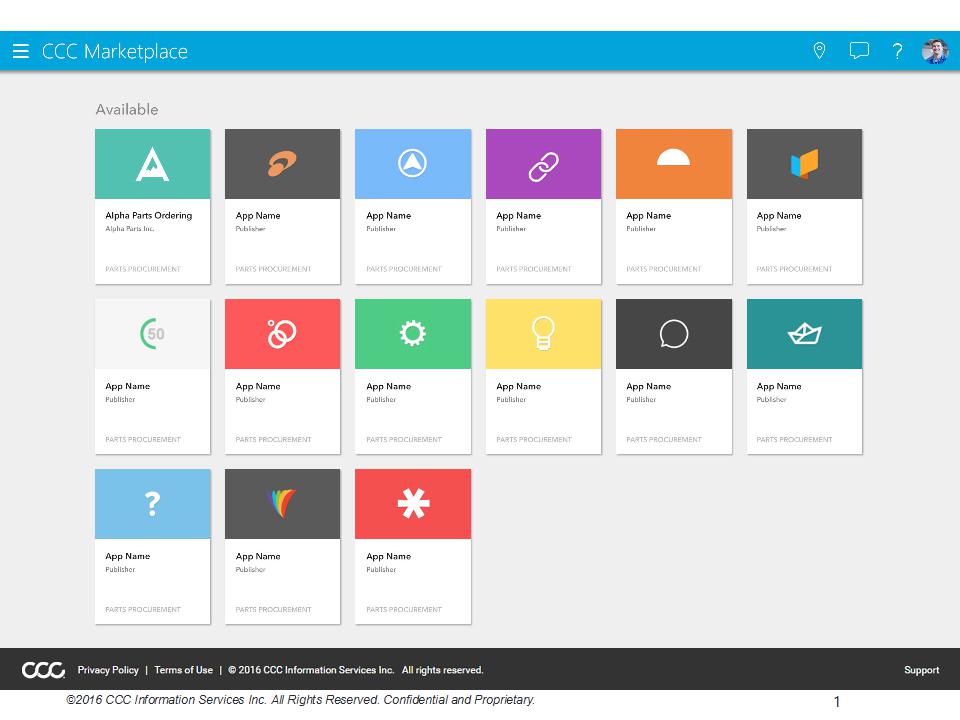
The options will basically indicate a company that’s paired an existing program with a back-end interface to exchange a shop’s BMS files securely with CCC. (Though CCC hopes new developers will take advantage of the easier XML format of a BMS file to create new collision repair industry solutions.)
Just like with EMS today, recipients of BMS files could include parts procurement systems, rental car agencies, CSI systems, OEM-certified network managers or shop management systems, all of which will be charged $0.50 per estimate. EMS support will remain until April 2018, at which point the country’s largest estimating system will go BMS-only.
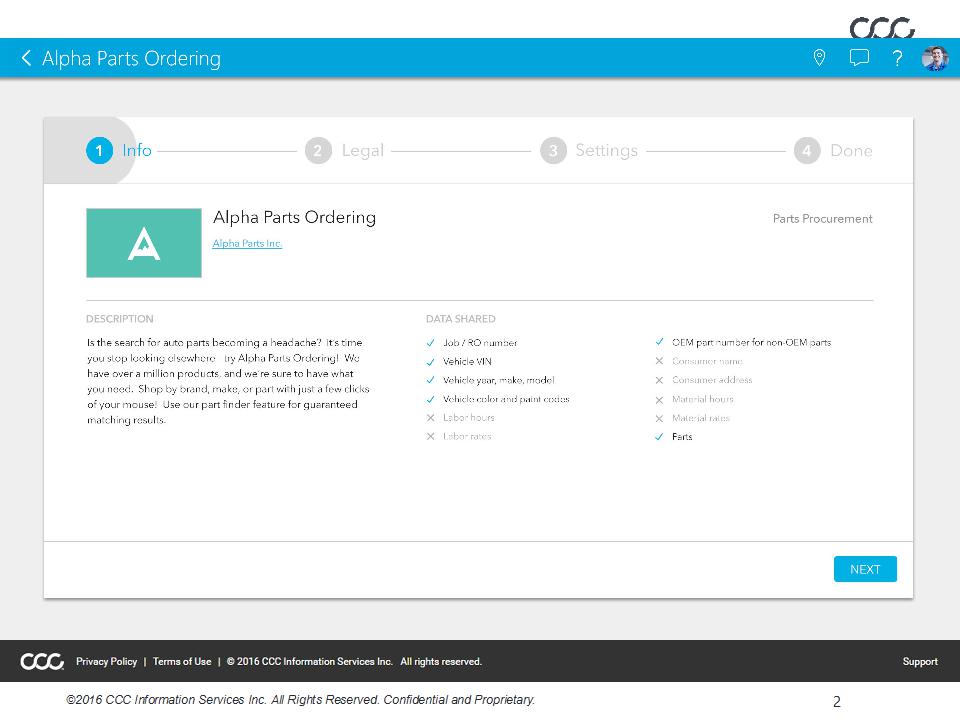
As we’ve examined through a series of fall articles, this initiative carries the potential to greatly benefit the industry, particularly larger operations with more to lose from inefficiency and data breaches. (Though both are bad business for a single-store location as well.)
But it also raises concerns of control and cost — issues which might arise Thursday during the Collision Industry Conference. Frank Terlep of eMarketing Sherpas will give a special presentation at 4:15 p.m. described by CIC as asking, “CIECA BMS: Industry Standard or a New Way to Control and Centralize Industry Data?”
CCC market solutions Vice President Mark Fincher re-examined those topics and sought to clarify related topics in an interview Jan. 4.
“We’ve received a lot of positive feedback,” Fincher said. Both shops and vendors agree that BMS is better than EMS, but there was a “consistent theme” of concern about pricing, he said. But CCC’s also found shops willing to wait and see what happens following the launch.
CCC won’t charge shops for the change, but the $0.50-per-estimate fee to receive BMS body shop repair data under Secure Share could be passed on by vendors to shops.
Regardless of who ultimately absorbs the cost, a theoretical 22,000 users sending hundreds of estimates annually through CCC to multiple vendors could mean millions of dollars taken out of the collision repair ecosystem.
However, Fincher again disputed the potential cost. About 25 percent of CCC users don’t even have EMS activated, he said.
“A quarter of our shops don’t even use it,” he said.
There might not be as many vendors affected as one would expect. Fincher said not all companies which interact with collision repairers, such as shop management systems, use EMS files, which further reduces the number of affected transactions.
“We see it from our side,” he said. “… I don’t think it’s (the number of EMS transmissions) as maybe as great as everybody thinks.”
He also reminded the industry that contrary to some misconceptions, CCC was only charging each vendor once per estimate/repair order — not every time the general work file was supplemented or changed. It’s $0.50, and no more, per vendor per vehicle that receives a collision repair. Also, just as shops can pick which vendors they want to receive data and what fields should be transmitted, vendors also can opt to similarly filter messages from shops — further reducing the cost and complexity the vendor would incur.
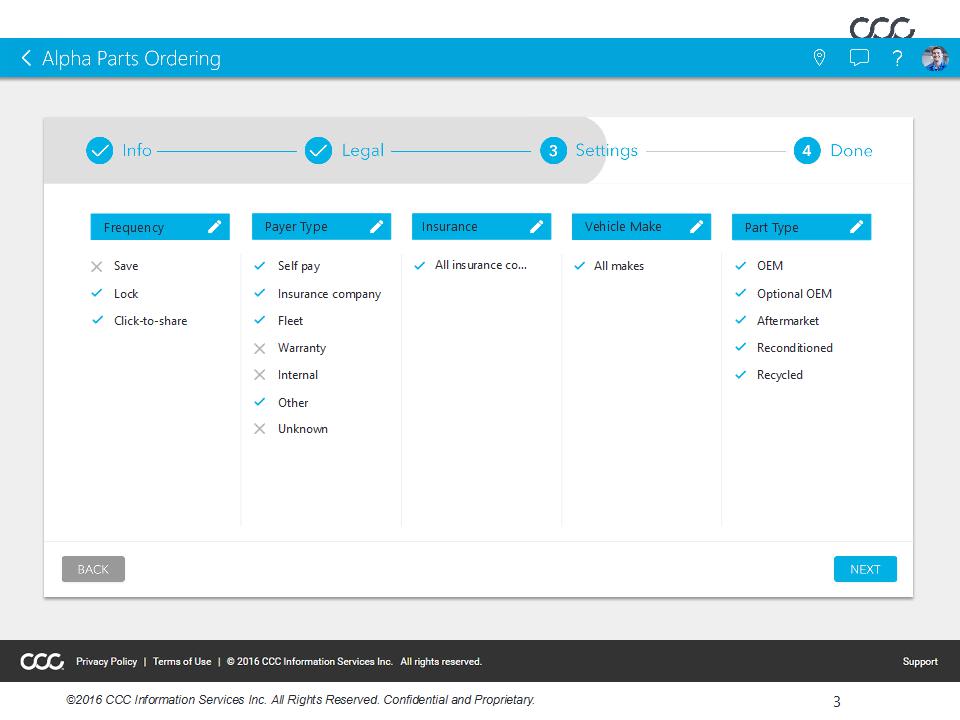
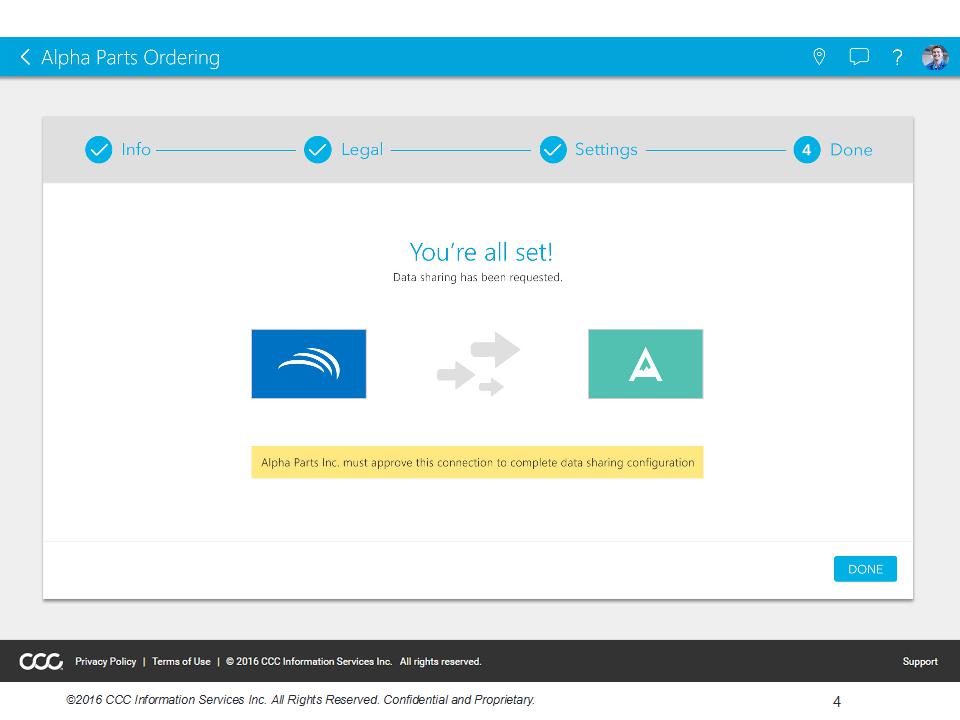
Fincher also assured shops that CCC wouldn’t use the new initiative as an opportunity to jack up the price of CCC One.
“It’s not our intention,” he said.
“It’s just not how we operate,” he continued, pointing to the company’s history.
CCC’s last major pricing update was in 2009 when CCC One was developed, according to Fincher, and the company hasn’t raised list prices since despite having “significantly increased the value” with additional services.
“Our growth strategy is really based on keeping the goodwill of our customers,” he said.
Finally, Fincher pointed out that the industry had a “misconception that EMS is free.”
“It’s really not free,” he continued. CCC has been providing the infrastructure and support for the EMS file transmissions and eating the costs.
“We process over a million EMS transactions every year,” Fincher said. Like any other app provider, it incurs the cost of developing, translating and mapping the technology.
CCC receives a lot of support calls related to EMS, and third-party app providers also say they receive support calls, Fincher said.
In a non-data-pump scenario, shops must upload files to a website, and it can be “really difficult to get shops to do that.” That translates into provider-shop calls. But sometimes glitches happen with the process of conveying data through a data pump — deleted directories, services fail to start, etc. — and each time, “that’s a tech support call.”
Fincher said that once CCC analyzed its own costs related to EMS and the format’s inefficiency, the company realized “it’s expensive.” Based on that, it extrapolated that the “significant savings” and better efficiency CCC would see by switching to BMS might be realized by others as well.
Also as before, Fincher stressed that CCC was only serving as a middleman, not the owner of the data it facilitated being shared.
“We’ve never claimed ownership of the data,” he said.
CCC’s data policy was publicly available, and “nothing really changed there.”
On a practical level, while the shop’s data won’t be “owned” by CCC, it might not be as easily exportable to vendors who refuse to use Secure Share following the EMS sunset. But alternatives still exist for digital record transmission. There’s also a case to be made for trading some control for the convenience of CCC handling the infrastructure of data security. Read more on these practical and philosophical control issues here.
Correction: An earlier version of this story incorrectly described BMS encryption. The BMS standard doesn’t produce encrypted messages per se; however, its XML outputs can be easily encrypted by off-the-shelf software for additional security not necessarily possible with the obsolete EMS messaging format. CCC will subject BMS messages transmitted through Secure Share to 128-bit encryption.
More information:
“CCC Introduces CCC Secure Share™ Network”
CCC, Sept. 29, 2016
Featured images: A draft of CCC’s Secure Share program for filtering and managing recipients of auto body shop data through BMS is shown in screenshots. (Provided by CCC)
